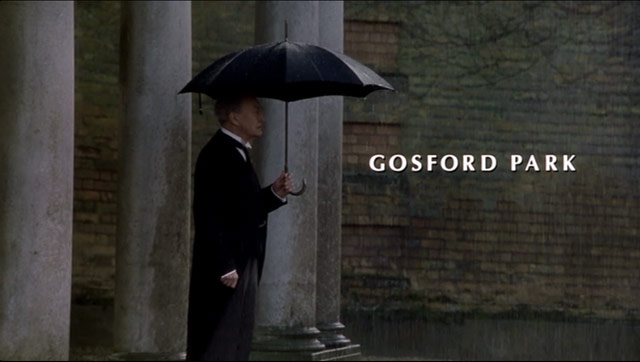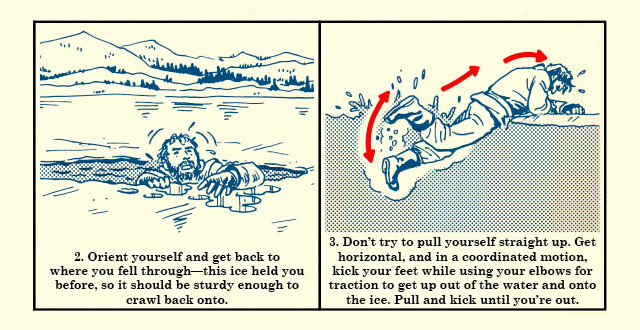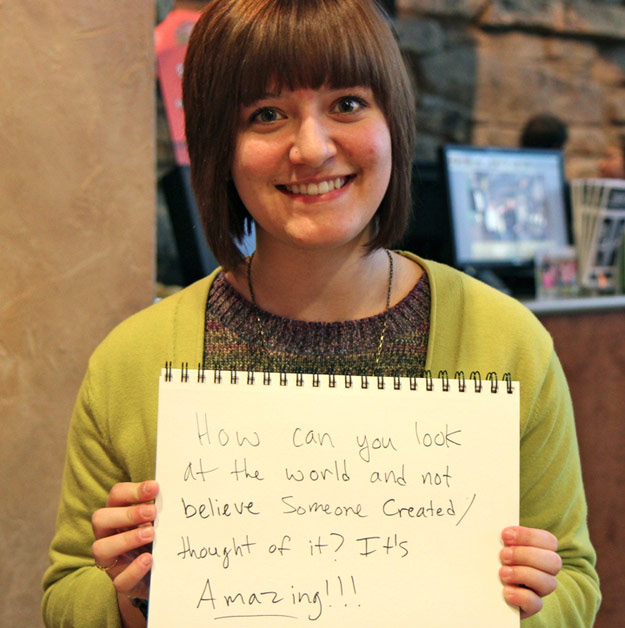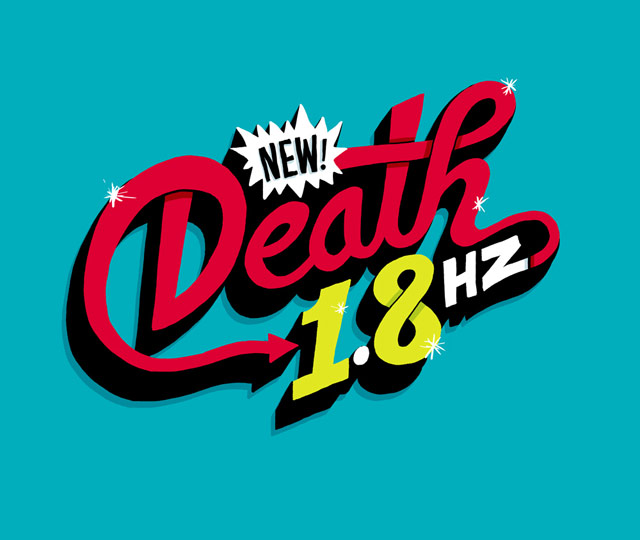Love these voxelated animal sculptures by New Zealand artist Ben Foster.

Very aesthetically (but perhaps not conceptually) New Aesthetic. (via colossal)
Love these voxelated animal sculptures by New Zealand artist Ben Foster.

Very aesthetically (but perhaps not conceptually) New Aesthetic. (via colossal)
Stefano Maggiolo made a map of how much the time zones of the world vary from solar time. The darker the color, the more the deviation.

Looking for other regions of the world having the same peculiarity of Spain, I edited a world map from Wikipedia to show the difference between solar and standard time. It turns out, there are many places where the sun rises and sets late in the day, like in Spain, but not a lot where it is very early (highlighted in red and green in the map, respectively). Most of Russia is heavily red, but mostly in zones with very scarce population; the exception is St. Petersburg, with a discrepancy of two hours, but the effect on time is mitigated by the high latitude. The most extreme example of Spain-like time is western China: the difference reaches three hours against solar time. For example, today the sun rises there at 10:15 and sets at 19:45, and solar noon is at 15:01.
Something to note: China is about as big across as the continental United States and has only one huge time zone. (via slate)
Pop Chart Lab has produced a print of grammatical diagrams of the opening lines of notable novels. Here's Hemingway's The Old Man and the Sea:

There are also sentences from DFW, Plath, and Austen. Prints start at $29.
Like Ukraine, Venezuela has been experiencing anti-government protests over the past few weeks. In Focus has a selection of photos from the protests.

Moisés Naím has an article that explains what's behind the protests.
This is the half of the country whose sons and daughters have taken to the streets to protest against a repressive regime that treats them as mortal enemies. And maybe they are. After all, they represent the vanguard of a society no longer willing to tolerate an abusive government with disastrous results to show for its 15-year grip on power: Venezuela is now the world champion of inflation, homicide, insecurity, and shortages of essential goods-from milk for children to insulin for diabetics and all kinds of indispensable products. All this despite having the greatest oil reserves in the world and a government with absolute control of all state institutions and levers of power. Sadly, that government has used its immense wealth and authority to push through unsustainable populist policies, buy votes, jail opposition leaders, and shut down television channels. Daily shortages of basic goods, fear of crime, and hopelessness have become unbearable.
Richard Lenski and his team of researchers utilize a clever technique to observe and study evolution of bacteria in realtime. Periodically freezing a sample of the bacteria every few generations allows them to go back in time to study particular traits and to pinpoint when differences occur.
After 30,000 generations, researchers noticed something strange. One population had evolved the ability to use a different carbon-based molecule in the solution, called citrate, as a power source.
Researchers wondered whether it was the result of a rare, single mutation, or a more complex change involving a series of mutations over generations. To find out, one of Lenski's postdocs, Zachary Blount, took some of the frozen cells and grew them in a culture lacking glucose, with citrate as the only potential food source.
After testing 10 trillion ancestral cells from early generations, he got no growth. But when he tested cells from the 20,000th generation on, he began to get results, eventually finding 19 mutants that could use citrate as a power source. The results showed that the citrate-eating mutation was most likely not the result of a single mutation, but one enabled by multiple changes over 20,000 generations.
Nice short video tour of the U.S. Naval Observatory with Dr. Demetrios Matsakis, Chief Scientist for USNO's Time Services.
I refer to my clocks as my babies...and that I must take care of them.
According to an article in The Journal of the American Medical Association, the obesity rate of American 2- to 5-year-old children has dropped from 14% in 2004 to 8% in 2012.
Children now consume fewer calories from sugary beverages than they did in 1999. More women are breast-feeding, which can lead to a healthier range of weight gain for young children. Federal researchers have also chronicled a drop in overall calories for children in the past decade, down by 7 percent for boys and 4 percent for girls, but health experts said those declines were too small to make much difference.
Barry M. Popkin, a researcher at the University of North Carolina at Chapel Hill who has tracked American food purchases in a large data project, said families with children had been buying lower-calorie foods over the past decade, a pattern he said was unrelated to the economic downturn.
He credited those habits, and changes in the federally funded Special Supplemental Nutrition Program for Women, Infants and Children, for the decline in obesity among young children. The program, which subsidizes food for low-income women, reduced funding for fruit juices, cheese and eggs and increased it for whole fruits and vegetables.
Kevin Drum calls the drop "baffling".
Love this concept cover for Fahrenheit 451 by designer Elizabeth Perez...the 1 is a match and the spine is striking paper for lighting it.

Fahrenheit 451 is a novel about a dystopian future where books are outlawed and firemen burn any house that contains them. The story is about suppressing ideas, and about how television destroys interest in reading literature.
I wanted to spread the book-burning message to the book itself. The book's spine is screen-printed with a matchbook striking paper surface, so the book itself can be burned.
(via @daveg)
Stephen Wolfram (of Mathematica and A New Kind of Science fame) says the upcoming Wolfram Language is his company's "most important technology project yet".
We call it the Wolfram Language because it is a language. But it's a new and different kind of language. It's a general-purpose knowledge-based language. That covers all forms of computing, in a new way.
There are plenty of existing general-purpose computer languages. But their vision is very different — and in a sense much more modest — than the Wolfram Language. They concentrate on managing the structure of programs, keeping the language itself small in scope, and relying on a web of external libraries for additional functionality. In the Wolfram Language my concept from the very beginning has been to create a single tightly integrated system in which as much as possible is included right in the language itself.
The demo video is a little mind-melting in parts:
Not sure if this will take off or not, but the idea behind it all is worth exploring.
The best chess player in history, 23-year-old Norwegian Magnus Carlsen, has released an iOS app where you can play simulated games against Carlsen at various stages of his career, from age 5 up to the present. The Telegraph has the details.
Anyone who wants to find out more about his playing style can do so with Mr Carlsen's new app, which allows users to play him at the different levels he has achieved since the age of five.
The app is built on hundreds of thousands of different positions from Mr Carlsen's games, be they classical, rapid or blitz, to determine what moves he would make at those ages.
The aim is to promote chess among as many people as possible to make the sport more popular and accessible.
"The good thing is that you can play me at any age. At age five, anyone has a chance to beat me," Mr Carlsen said.
So what is it like for Mr Carlsen to play against his younger self?
"He is really tricky," the champion said. "Even Magnus at 11 years old was a very gifted tactician. A while ago I played as a test Magnus [aged] 14. I outplayed him at some point positionally. And just boom, boom, he tricked me tactically.
"But he makes mistakes as well, so I just have to be patient."
(via mr)
NASA announced the discovery of 719 new planets today. That brings the tally of known planets in our universe to almost 1800. 20 years ago, that number was not more than 15 (including the nine planets orbiting the Sun). Here's a rough timeline of the dramatically increasing pace of planetary discovery:
4.54 billion BCE-1700: 6
1700-1799: 1
1800-1899: 1
1900-1950: 1
1951-1990: 1
1991-2000: 49
2001-2005: 131
2006-2010: 355
2006: -1 [for Pluto :( ]
2011-2014: 1243
Last year, Jonathan Corum made an infographic of the sizes and orbits of the 190 confirmed planets discovered at that point by the Kepler mission. I hope the Times updates it with this recent batch.
Planet Money: always buy the bigger pizza because geometry.
The math of why bigger pizzas are such a good deal is simple. A pizza is a circle, and the area of a circle increases with the square of the radius.
So, for example, a 16-inch pizza is actually four times as big as an 8-inch pizza.
And when you look at thousands of pizza prices from around the U.S., you see that you almost always get a much, much better deal when you buy a bigger pizza.
In celebration of its 20th anniversary, Fast Company presents an oral history of the SXSW Interactive Festival.
Within SXSW Interactive's march from obscurity to prominence is the story of digital culture itself. SXSW was a hive of activity for early web denizens and hackers around the turn of the century, and a birthing ground for the social media revolution that reshaped modern life in the second half of the '00s. Its emergence from the shadow of the music festival it grew out of mirrors the transformation of geeks into modern society's newest rock stars.
I went to SXSW a handful of times (maybe five?), met my wife there, and even keynoted (w/ Dooce) in the big room (which was, in my memory, a disaster of Zuckerpudlian proportions). Paul Ford noted on Twitter:
Wow this is just a tiny bit The Oral History of Talking About Yourself.
Totes get that, but South By1 distinguished itself in the early days by being a conference where anyone could participate. Attendees took ownership of this conference as they could not at the other big web conferences of the era. Everyone was someone, everyone was nobody. (I mean, not literally — the Jeffreys (Zeldman and Veen) couldn't walk three feet without someone engaging them in conversation. But you get my drift.) As on the personal web of the late 1900s and early 2000s, you were the focal point of SXSW, for better or worse.
There was an effort back in my day to refer to the conference as "sick-sow" but thankfully that didn't stick. I mean, Jesus.↩
The sheng is a free-reed wind instrument dating back to 1100 BCE in China. Using a modern sheng, Li-Jin Lee makes the ancient instrument sound remarkably like Super Mario Bros., including coin and power-up sounds.
And I know the Olympics are over and good riddance and all that, but this Mario Kart speedskating bit is great. Baby Park was one of my favorite tracks on Double Dash.

If you're having Downton Abbey withdrawals, may I suggest Robert Altman's Gosford Park? Written by Downton creator Julian Fellowes, it's a proto-Downton of sorts: lots of upstairs/downstairs with a dash of mystery. And the cast! Clive Owen, Emily Watson, Stephen Fry, Kristin Scott Thomas, Michael Gambon, Derek Jacobi, Kelly Macdonald, Helen Mirren, Ryan Phillippe...and Maggie Smith plays a witty countess.
Watch it on Netflix Instant, at Amazon, or on iTunes.
My mind is so tiny these days it doesn't take much to blow it, so grain of salt and all that. But, this theory that Andy's mom in Toy Story is Jessie's original owner is popping my fuse right now.
Several months ago, one of my anonymous Pixar Theory Interns (that's a thing on a resume) came to me with a crazy proposition: Andy's mom is Emily, Jessie's previous owner.
I laughed. I then agreed.
Previously: a grand unified theory of Pixar.
Fine work as usual from Christian Annyas: a look at the design of the Warner Bros logo from 1923 to the present. The classic "WB" shield of my Bugs-and-Daffy-saturated youth will always be a favorite, but I do like the Saul Bass logo of the 70s and early 80s:

Affleck's Argo and Soderbergh's Magic Mike both used the Bass logo in place of the contemporary logo, which is the kind of little detail I love.
Huzzah! Long unavailable (or at least not widely available), Errol Morris' documentary film on Stephen Hawking and his work, A Brief History of Time, is now available for rent or purchase on iTunes. Or if you can wait a little bit, there's a Criterion Blu-ray edition coming out in mid-March. Bonus: score by Philip Glass!
Soundboart is a Beyonce soundboard. I must have pushed the AH-AH-AH button a thousand times until I discovered the SURFBOARDT button.
This Tumblr is collecting instances of experimental music on children's television shows. Some personal favorites are Al Jarnow's Cosmic Clock and Philip Glass on Sesame Street. (via @youngna)
And if you want a sense of how weird, and how fraught, the relationship between science, politics, and commerce is in our modern world, then there's really no better place to go.
In The Daily Beast Michael Schulson provides a alternate view on Whole Foods: America's Temple of Pseudoscience. (The first time I read this, I nearly spit out my probiotic-infused kombucha, kale, quinoa, coconut water shake.)
Theremin is a simple and fun audio synthesizer built in HTML5. My kids did not want to stop playing with this.
This is called a billing block:

You find it at the bottom of movie posters and often at the end of movie trailers. In an Op-Art piece from last year, Ben Schott explains how the billing block is carefully constructed with information from contracts and legal agreements.
The content, order and format of the billing block are governed by two things: personal service contracts with cast and crew, and industrywide agreements with professional guilds — notably the Directors Guild of America (D.G.A.) and the Writers Guild of America (W.G.A.). Thus, while some elements of the billing block remain consistent, others depend of the type of film and on individual negotiations. That said, there has been a marked inflation in billing block credits. An "Ocean's 11" poster from 1960 credited just three noncast individuals; the 2001 remake poster credited, coincidentally, 11.
While they still represent a small overall number, the popularity in the US of naming children after guns (Colt, Remington, Ruger, Gunner, Beretta) is up in recent years.
In 2002, only 194 babies were named Colt, while in 2012 there were 955. Just 185 babies were given the name Remington in 2002, but by 2012 the number had jumped to 666. Perhaps the most surprising of all, however, is a jump in the name Ruger's (America's leading firearm manufacturer) from just 23 in 2002 to 118 in 2012. "This name [Ruger] is more evidence of parents' increasing interest in naming children after firearms," Wattenberg writes. "Colt, Remington, and Gauge have all soared, and Gunner is much more common than the traditional name Gunnar."
If you play carefully by not stomping enemies, not collecting coins, not eating mushrooms or flowers, and hopping on the flagpole at the very last second, you can rescue the princess in Super Mario Bros with only 500 points.
One bit is surprisingly tricky:
How tough is that jump in 8-1? Well, the timing of the liftoff, the duration of holding the jump button, and the timing of the wall jump are all frame perfect. NES games run at 60 frames per second, which means all the necessary inputs need to be timed within 1/60 of a second. In addition, the starting position before running I used not only has to be on the right pixel, but also the x sub-pixel has to fall within a certain range (technical stuff blah blah blah). In short, it's a pretty annoying jump.
When I was a kid, I left my NES on for three straight days to flip the score in SMB, using the 1UP trick and another spot in the game to get many lives and points. Scoring lower would have been a lot quicker.
Since November, anti-government protests have been happening in Ukraine. A recent truce gave hope that the violence would end, but mistrust on both sides has resulted in the worst clashes yet. The photos from the main fighting in Kiev are unbelievable.

Why the protests? Think Progress published an explainer this morning, before the latest round of violence.
The protests began on November 22, after President Viktor Yanukovych reversed course and refused to sign political and trade agreements with the European Union that had been in the works for years after heavy pressure from Moscow to abandon the agreements. Despite a violent police crackdown, protesters vowed to continue blockading streets and occupying public buildings until their central demand is met: the current government, including Yanukovych, must go.
The treaties would have opened the European Union market to Ukrainian companies and could have boosted the Ukrainian GDP by more than six percent over ten years. The country is suffering through an economic depression and lower tariffs and expanded competition could have also lowered prices, "fueling an increase of household consumption of some 12 percent." Ukraine would have also adopted 350 EU laws, codifying what many Ukrainians saw as a "commitment to European standards of governance and social justice." To them, the treaty was a way of diminishing Russia's long-time influence and reversing the trend of persistent economic corruption and sluggishness.
A poster on Reddit asks: What are two events that took place in the same time in history but don't seem like they would have? A few of my favorite answers (from this thread and a previous one):
When pilgrims were landing on Plymouth Rock, you could already visit what is now Santa Fe, New Mexico to stay at a hotel, eat at a restaurant and buy Native American silver.
Prisoners began to arrive to Auschwitz a few days after McDonald's was founded.
The first wagon train of the Oregon Trail heads out the same year the fax machine is invented.
Nintendo was founded in 1888. Jack the Ripper was on the loose in 1888.
1912 saw the maiden voyage of the Titanic as well as the birth of vitamins, x-ray crystallography, and MDMA.
1971: The year in which America drove a lunar buggy on the moon and Switzerland gave women the vote.
NASA's Gemini program was winding down at the same time as plate tectonics, as we know it today, was becoming refined and accepted by the scientific community.
Spain was still a fascist dictatorship when Microsoft was founded.
There were no classes in calculus in Harvard's curriculum for the first few years because calculus hadn't been discovered yet.
Two empires [Roman & Ottoman] spanned the entire gap from Jesus to Babe Ruth.
When the pyramids were being built, there were still woolly mammoths.
The last use of the guillotine was in France the same year Star Wars came out.
Oxford University was over 300 years old when the Aztec Empire was founded.
Related: true facts that sound made up, timeline twins, and the Great Span.
I don't know if Facebook buying WhatsApp for $16 billion is a good idea for Facebook or not, but I'm pretty sure it's a potentially good idea. I'd heard of WhatsApp before, but I first took real notice of it last July when researching this post about Instagram businesses in Kuwait.
Several of the businesses I found used WhatsApp for messaging...browse via Instagram, arrange to buy via WhatsApp. Very low cost, more flexible than SMS, cross-platform, no giant social network appendage to deal with (e.g. Facebook/Twitter), and it's not email. And, the thing that struck me, WhatsApp (and Instagram) being used for financial/business transactions. Services teens use for social grooming are certainly interesting and important (after all, teens' social grooming is how, eventually, we end up with more teens), but when you've got something being used in all sorts of places all over the world as a social tool *and* a marketplace, you've got yourself a platform and that is potentially very valuable.
You've probably already read this or have at least been urged to read it, but this New Yorker piece by Roger Angell about growing old is lovely, moving, and insightful. Set aside 15 minutes of your day to read it; it's worth it.
"Most of the people my age is dead. You could look it up" was the way Casey Stengel put it. He was seventy-five at the time, and contemporary social scientists might prefer Casey's line delivered at eighty-five now, for accuracy, but the point remains. We geezers carry about a bulging directory of dead husbands or wives, children, parents, lovers, brothers and sisters, dentists and shrinks, office sidekicks, summer neighbors, classmates, and bosses, all once entirely familiar to us and seen as part of the safe landscape of the day. It's no wonder we're a bit bent.
Angell is part of the New Yorker's Great Span: his mother Katharine White worked at the magazine almost from the beginning in 1925, so did his stepfather E.B. White, and Angell himself wrote and edited for every single editor-in-chief the New Yorker has ever had, from founder Harold Ross to current chief David Remnick.
Things have been a little more hectic than usual while I deal with some non-work issues, which means I haven't been spending as much time as I'd like on kottke.org. You may have noticed it's been a little rough around the edges lately. (Or maybe you haven't...but I've noticed.) Apologies for that and hopefully I'll be able to focus on the site more in the coming weeks.
I'd like to take this opportunity to thank some of the folks and organizations who keep the site running so smoothly even when I'm off worrying about other things:
- EngineHosting for worry-free, responsive, robust hosting.
- Hoefler & Frere-Jones for the fantastic webfonts.
- The Deck ad network for providing one of the simplest ad experiences on the web.
- Gmail, GitHub, Dropbox, and AWS for hosting various files in various formats.
- Greg Knauss for cheerfully answering my occasional sysadmin queries and even logging in every once in awhile to fix problems (after sufficient pleading on my part). He's not as heartless as he seems.
- The guest editors, lately including Sarah, Aaron, and Tim. And Chris Piascik for the occasional editorial illustration.
And, not least, everyone out there who takes the time to read, write in with comments & links, shares posts on social media, and recommends the site to friends. Thanks, everyone.
Related to my post on the frequency of humanity is this post on XKCD on the various frequencies of events, from human births to dog bites to stolen bicycles.
I don't care if all of this vocabulary of NYC's best bars is made up (it sure sounds made up), I still loved reading it. You can totally tell which places are about the drinks, which are about hospitality, which are bitchy, and which are all about the benjamins.
Sipper: A small pour (typically Mother's Milk) gifted to a colleague, loved one, regular, etc.
Amuse-booze (experimental term): A tiny sipper to acknowledge a guest an reassure them they will be served soon.
The Cousins: Affectionate term for other cocktail bars (after the British secret service's name for the CIA in Le Carre's Smiley novels).
Even if it's fake, it's real.
BBC Radio 1 recorded David Attenborough doing nature-style commentary for curling:
For the curious, here are the rules of and other assorted information about curling.
In a lovely short film, Ilinca Calugareanu explores the world of 1980s black market VHS movies in Communist Romania and finds the woman who did all the dubbed dialogue.
All the dialogue on these movies was dubbed into Romanian in a husky, high-pitched woman's voice. Throughout my childhood, these films provided a glimpse into the forbidden West, resplendent with blue jeans, Coke and skyscrapers. As Hollywood movies became ubiquitous through the black market, this voice became one of the most recognizable in Romania. Yet no one knew who she was.
The film is adapted from an upcoming feature-length documentary called Chuck Norris vs Communism. (via df)
Your addiction to various things digital might be wasting a lot of your time. But it's paying off in a big way for companies like King Digital Entertainment, the folks behind the wildly popular Candy Crush Saga. King just announced plans for an IPO. Can a company with one very big hit really go public? On one hand, consider this: "Of the 5000 companies in NASDAQ, only 6 have as much revenue ($1.88b) and fat profit margins (30%) as King." On the other hand, it's tough to stay on top in the hit-driven game industry. Want to invest in this IPO? First, you need to consider how long King will wear the crown.
Candy Crush Saga really has created some incredible numbers.
Futurist Ray Kurzweil reviews Spike Jonze's Her.
I would place some of the elements in Jonze's depiction at around 2020, give or take a couple of years, such as the diffident and insulting videogame character he interacts with, and the pin-sized cameras that one can place like a freckle on one's face. Other elements seem more like 2014, such as the flat-panel displays, notebooks and mobile devices.
Samantha herself I would place at 2029, when the leap to human-level AI would be reasonably believable. There are some incongruities, however. As I mentioned, a lot of the dramatic tension is provided by the fact that Theodore's love interest does not have a body. But this is an unrealistic notion. It would be technically trivial in the future to provide her a virtual visual presence to match her virtual auditory presence, using, lens-mounted displays, for example, that display images onto Theodore's retinas.
According to Jonze in interviews, Kurzweil's work on the singularity was a definite influence on the movie.
A short video from Gizmodo about how Criterion restores a film for release on DVD/Blu-ray. Watch as the color, contrast, audio, and picture is corrected on Hitchcock's Foreign Correspondent.
Not sure if he's still out there or not, but Dexter Benjamin has been a bike messenger in NYC for more than 20 years, navigating his bike around the city on only one leg. He lost the leg pushing a boy out of traffic in his native Trinidad. Here's a 2006 interview with Benjamin:
And from the NY Times in 2005, a brief profile.
He came to New York to participate in a marathon, decided to stay, and before long was leaning on a crutch and panhandling in Grand Central Terminal. He spent many nights sleeping in a shelter, and more than one dawn wondering who would stoop to steal a one-legged man's shoe.
Another Trinidad native, Steve Alexis, eventually hired him as a messenger. "He could walk with crutches," Mr. Alexis says. "I figure if he rides a bike, that's even better."
After learning to shift his weight for proper balance, Mr. Benjamin was soon darting through Manhattan streets in a triumphal blur. "I love their reaction when I pass them," he says of others. "They're seeing something impossible."
(thx, porter)
Every year, a bunch of folks play a game called Last Man, in which the participants attempt to be the last person to find out the result of the Super Bowl. TLDR did an entertaining podcast on this year's contestants.
Update: The New Yorker recently ran a piece on the Last Man game.
Most of the runners, however, found themselves waking up each day in a cold sweat. "I feel like I'm being sequestered for the stupidest jury trial in modern history," one competitor said. "It's gotten to the point where three things may end me: recklessness, homesickness, or sheer boredom."
I needed a good laugh this week and this news report from The Onion about how the Olympic Village in Sochi was built with the athletes' sexual activities in mind was an LOL machine. NSFW.
Apparently Tinder is all the rage in the Olympic Village this year...those athletes need to work through the 100,000 condoms they've been provided.
Shopping in a supermarket can be visually overwhelming. Designer Mehmet Gozetlik took the packaging of some well-known brands and simplified them (part two). It's interesting how some of these work and some don't. Duracell works really well because the batteries themselves still carry most of the branding:

The simplified branding of Guinness and Evian works pretty well too...the packaging is itself iconic and distinctive enough to carry them. The Pringles and Red Bull are missing something, but in almost all cases, I like one of the simplified options more than the original. (via @dunstan)
Flappy Bird Space Program is my favorite Flappy Bird riff yet. Instead of maneuvering through pipes, the object is to get as many birds as you can orbiting a tiny planet.

Love how the demise of this game has prompted such a burst of creative exploration of simple game mechanics. Flowers growing in Flappy Bird compost.
Writer Mary Beth Williams tweeted the following this morning:
No actively competitive female sports figures on SI cover since Olympic gymnast team. July 2012.
Intrigued, I went back through Sports Illustrated's cover archive and counted the number of covers featuring active female athletes. I only needed one hand:
2013: 0
2012: 1 (US Women's Gymnastics Team)
2011: 1 (Hope Solo)
2010: 3! (Serena Williams, Lindsey Vonn, Julia Mancuso & Vonn)
2009: 0
Pathetic. And ESPN the Magazine isn't any better...most of the female athletes on their covers over the past five years are naked. Well, except for this one of the incredibly talented skier Lindsey Vonn with her face photoshopped onto Sharon Stone's body in the leg uncrossing scene from Basic Instinct.
As Williams notes on Twitter, Sports Illustrated "could show women as more than bikinis. As athletes." and "I want my daughters to read sports magazines & see themselves represented, not Barbie." Seems like we need a Title IX for sports magazines.
Update: Vonn's face was not photoshopped onto Stone's body. Which is...better, I guess? Maybe?
This is fucking great and crazy...when the snow hit NYC yesterday, Casey Neistat grabbed his snowboard and went snowboarding behind a Jeep in the East Village.
From 1977, a video of someone snowboarding on one of the first commercially made boards:
I'm not completely sure who the rider is (probably Dimitrije Milovich), but the board is a Winterstick. A company who owns the Winterstick trademark still makes a version of the split-tail board you see in the video.

From what I can tell, Winterstick was the first modern snowboard company but was quickly eclipsed by rivals Sims and Burton, with Burton emerging in the 1990s as the growing sport's 800 lb gorilla.
There are too many camels in the Bible. Evidence suggests they were domesticated in Israel centuries after the events in Genesis took place.
Camels probably had little or no role in the lives of such early Jewish patriarchs as Abraham, Jacob and Joseph, who lived in the first half of the second millennium B.C., and yet stories about them mention these domesticated pack animals more than 20 times. Genesis 24, for example, tells of Abraham's servant going by camel on a mission to find a wife for Isaac.
These anachronisms are telling evidence that the Bible was written or edited long after the events it narrates and is not always reliable as verifiable history. These camel stories "do not encapsulate memories from the second millennium," said Noam Mizrahi, an Israeli biblical scholar, "but should be viewed as back-projections from a much later period."
Dr. Mizrahi likened the practice to a historical account of medieval events that veers off to a description of "how people in the Middle Ages used semitrailers in order to transport goods from one European kingdom to another."
Update: Added "in Israel" to clarify the camel domestication timeline...they were domesticated much earlier in the Arabian Peninsula.
Archaeologists have established that camels were probably domesticated in the Arabian Peninsula for use as pack animals sometime towards the end of the 2nd millennium BCE. In the southern Levant, where Israel is located, the oldest known domesticated camel bones are from the Aravah Valley, which runs along the Israeli-Jordanian border from the Dead Sea to the Red Sea and was an ancient center of copper production. At a 2009 dig, Dr. Ben-Yosef dated an Aravah Valley copper smelting camp where the domesticated camel bones were found to the 11th to 9th century BCE.
(via @arbesman)


Following the film footage of the 1932 Winter Olympics (ice skating on stilts! Keystone Cops ski jumping!), here's a collection of photos from In Focus of the first 12 Winter Games, from 1924 to 1976.
I can't stop watching this...watch Imperial AT-AT's attack Olympic mogul skiers on Hoth:
Those skiers are not going to make it past the first marker. (via devour)
This is way more fun that regular Flappy Bird.

Would love to see a realtime graph of the distribution of scores for the last 1000 players or so. (My current high: 3 4! [Also, the second I put this post up, the server went down. :( ] I'm the guy repeatedly dying at the first pipe.)
About 250 million years ago, Earth suffered its fifth (and worst) mass extinction event. Nearly seventy percent of land species disappeared. And they got off easy compared to marine species. Are we headed for another mass extinction on Earth? I'm not ready to break that news. But something unusual is definitely going on and extinction rates seem to be speeding up. Here's an interesting chat with Elizabeth Kolbert, author of The Sixth Extinction.
The worst mass extinction of all time came about 250 million years ago [the Permian-Triassic extinction event]. There's a pretty good consensus there that this was caused by a huge volcanic event that went on for a long time and released a lot of carbon-dioxide into the atmosphere. That is pretty ominous considering that we are releasing a lot of CO2 into the atmosphere and people increasingly are drawing parallels between the two events.
Here's a bit of film footage from the third-ever Winter Olympics, held in Lake Placid, NY in 1932. The ski jumping segment is amazing and terrifying.
Here's how those Games compare to the modern day Olympics.
Nicolaus Wegner shot some gorgeous footage of thunderstorms and cloud formations in South Dakota and Wyoming during the summer of 2013.
(via devour)
Photo-sharing community Flickr turned ten years old this week. At Time, Harry McCracken takes a look back.
Earlier photo sites were mostly concerned with letting you put your pictures in front of friends and family. Flickr did that, too. But from the start, it was building a community of photo lovers around the world who wanted to share images with other photo lovers, as well as thousands of special interest sub-communities. It was about storytelling.
I was at Etech when Flickr launched and was one of the site's first few hundred users. The photo chat room they launched with was not that interesting to me, but when they turned it inside out, I was hooked. Happy birthday, Flickr.
Don't breathe. That's the first step to surviving if you fall through ice into near-freezing water.

(via mr)
100 years ago, Charlie Chaplin put on some floppy shoes, oversized trousers, a bowler, a mustache and became The Tramp. Within a year or two, he was internationally famous and in two years, he was making $670,000/year, an unprecedented figure in those days.
"It was amazingly fast," says David Robinson, a film critic who has written a definitive biography of Chaplin (His Life and Art) and is giving an already sold-out talk titled "100 Years of the Tramp" at the festival. "By mid-1914 he was already popular. By 1915 he was international. The speed with which it happened, without the modern media, is astonishing."
50 years ago, The Beatles were virtually unknown in the US and then, less than a year later, the largest TV audience in history watched them perform on the Ed Sullivan Show.
Consider the following: At the end of 1963, virtually no one in America had heard of the Beatles. Yet on Feb. 9, 1964, they drew the largest TV audience in history — 73 million viewers — when they appeared on "The Ed Sullivan Show." How could such a conquest have occurred so quickly? I once asked my friend Lenny Kaye that question, and he answered: "Everybody was ready for the '60s to begin." There's some truth to that, but of course there's much more to the story. The explosion of the Beatles in America was the result of combined forces — artistic, social and technological — as well as persistence, showbiz rivalries and more than a bit of luck. So how did it happen that the Beatles came out of nowhere to become the biggest cultural sensation ever, in six weeks?
This year, an iOS & Android game called Flappy Bird, that was originally released in 2013, suddenly rocketed to the top of the App Store bestseller list. (Seriously, look at how quickly it got popular.) The developer, Dong Nguyen, revealed in an interview with The Verge that the game was making $50,000 a day on ads. He's since made the game unavailable for download.
On February 1st, reviews exploded to 800 in a single hour. 6,500 iTunes App Store reviews in a single day. February 1st is the day Dong Nguyen woke up, stretched, checked email, checked Twitter, checked iTunes, and witnessed millions of downloads happening.
Millions.
You can only imagine what that must have felt like.
This is the same app no one cared about for more than half a year. Just one month prior, it was a great day if Flappy Bird got 20 total reviews on the App Store. Up until January 9th, there had never been an hour in which Flappy Bird received even 10 reviews (most of the time it was under 5).
Mike Judge has a new series coming to HBO in April. It's called Silicon Valley and is about startup culture. Here's a preview:
Snack dick.
For his Classic Movies in Miniature Style series, Murat Palta illustrated scenes from movies using traditional Ottoman motifs. Here's A Clockwork Orange and Kill Bill:


Great stuff. (via @pieratt)
Watch Ferrari's F1 pit crew do a pit stop in a bit over two seconds:
I wish this were in slow motion because I've watched this three times now and I still cannot understand how it's done. My favorite part is how calm they all are about it. Here's a longer video that shows the process over and over from several points of view, including from a GoPro mounted on the chest of the wheelgun man:
Watch for the guy on the front jack pirouetting out of the way. I would love to read a long piece on how F1 pit crews train and practice. There are tantalizing bits in shorter articles, like this one from Autosport.com:
With three people per wheel, two jack operators, and a handful of mechanics fulfilling other functions, each pit crew comprises nearly 20 people.
Each is trained for a specific role and teams take their preparation as seriously as drivers', managing crewmen's fitness and diet.
They are drilled incessantly at both the factory and during race weekends, with hundreds of pitstop practices until the process is instinctive.
Although problems such as faulty guns are rehearsed, everyone focuses on their own job — in a two-second pitstop, there is no time to see what everyone else is doing. By the time an error has been alerted, the car has often already pulled away, as was the case at the Nurburgring.
And this one from the AP:
Teams now spend huge sums to design their own equipment and improve the fitness of their teams who also work as mechanics. McLaren is working with the English Institute of Sport to hone their 24-member team's technique while Williams has partnered with Olympic champion Michael Johnson's Performance Center to work on everything from diet to eye-hand coordination to core strength.
Training has also been ramped up. Most teams have rigs to practice on in the factory and pit stops are practiced as many as 70 times over a typical race weekend. Each stop is timed and videotaped for later review.
"When you had to go from 3.5 seconds down to a lower number, then you really need to be very specific and accurate on how you train because everything needs to be very synchronized to achieve that level of fast time and consistency," said Williams' chief race engineer Xevi Pujolar, whose team had its fastest pit stop this season in Spain after making changes to its crew but still is almost a second behind the top teams.
"There still a lot of room for improvement and we are working hard to catch up to these guys that do close to two seconds," Pujolar said. "If you look at video of pit crew and how they move during pit stop, everything is so well coordinated. To achieve this level of coordination on every pits stop requires a lot of training."
As well as this series about pit stops by Williams on YouTube. (via digg)
What would happen if a tiny black hole the size of a marble were placed at the center of the Earth? Rest assured, the Earth won't completely be swallowed up by the black hole but that's really the only good news to offer.
First of all, not all of the Earth would simply be sucked into the black hole. When the matter near the black hole begins to fall into the black hole, it will be compressed to a very high density that will cause it to be heated to very high temperatures. These high temperatures will cause gamma rays, X-rays, and other radiation to heat up the other matter falling in to the black hole. The net effect will be that there will be a strong outward pressure on the outer layers of the Earth that will first slow down their fall and will eventually ionize and push the outer layers away from the black hole. So some inner portion of the core will fall into the black hole, but the outer layers, including the crust and all of us, would be vaporized to a high temperature plasma and blown into space.
This would be a gigantic explosion — a significant fraction of the rest of the mass of the Earth matter that actually fell into the black hole will be converted into energy.
FYI, that marble-sized black hole would have about the same mass as the Earth. Not that they exist, mind you. Maybe, maybe not. Blackish holes? Dark grey holes? Anyway, really heavy.
Hassan Hajjaj's photos of female motorbike enthusiasts from Morocco are fun.

On display at the Taymour Grahne Gallery in NYC through March 7.
This is nutty...by chance, a group of archaeologists found what are believed to be the oldest known human footprints outside of Africa on a beach in England. The footprints are an estimated 800,000 years old and are now completely gone. The tide that uncovered them washed them away in less than a month.
The footprints have been described as "one of the most important discoveries, if not the most important discovery that has been made on [Britain's] shores," by Dr Nick Ashton of the British Museum.
"It will rewrite our understanding of the early human occupation of Britain and indeed of Europe," he told BBC News.
The markings were first indentified in May last year during a low tide. Rough seas had eroded the sandy beach to reveal a series of elongated hollows.
In a presentation for the Visualized conference, Jonathan Corum says that he looks for the "weight of rain" when working on data graphics.
So when I'm looking at data, or working on an explanatory graphic, these are the moments I'm looking for. Little "Aha!" moments that I can point to, and say "Look here, something happened," and then try to explain. Often those small moments can help lead a reader into the graphic, or help to explain the whole.
The actual non-metaphorical weight of rain is surprisingly heavy; an inch of rain on an acre of land weighs 113.31 tons.
In a clip from The CBS Evening News With Walter Cronkite in 1981, a man in a hooded sweatshirt yelling about the Viet Cong threatened to jump from the 9th story of a building in Los Angeles. Out of nowhere, like a freaking superhero, appears Muhammad Ali, who manages to coax the man back into the building.
(via @DavidGrann)
For BEAT magazine, Gary Card drew an illustration of every hairstyle worn by Prince since 1978.

A few months ago, the site featured the BMX tricks of Tim Knoll, which were some of the most unusual tricks I'd seen. (That semi trailer limbo!) Tate Roskelley's tricks are even weirder, so much so that they seem more like an artistic statement on tricks than tricks themselves:
I think the "artist's statement" on YouTube is spot on:
Tate's got just about the most original perspective on BMX you can imagine. I think years ago when Jim C said "I just want to see what's possible", Tate took his words at face value. His riding is less about making a statement and more about asking questions. What is a bike trick? What is a street spot? The answers aren't always pretty (I'm sure he isn't going to start riding around with his stem bolts loose full time) but they're always interesting and Tate is always having fun.
This collection of before-and-after photos of NYC's streets shows how much the Bloomberg administration and former Transportation Commissioner Janette Sadik-Khan transformed the city's streets.

Constructing our cities around cars is one of the biggest mistakes of the 20th century and we're still paying for it. As Kaj Pindal cleverly depicted in his 1966 Oscar-nominated short film What On Earth!, it often seems like cars and not people are the Earth's dominant life form.
(via @anildash)
For Howler Magazine, Sam Markham writes about Diego Maradona's second goal against England in the 1986 World Cup quarterfinal, aka Probably The Best Goal of All Time. Markham focuses on how a pair of radio commentators — one English, the other from South America — called the goal.
Morales's ecstatic commentary of Maradona's second goal is itself iconic in Argentina, and his lyrical expression "Barrilete cosmico!" (Cosmic kite!) is now shorthand in Argentina and much of South America for Maradona. His narration is a frenzied mix of poetry, yelling, and sobbing that ends with a prayer: "Thank you, God, for football, for Maradona, for these tears, for this-Argentina 2, England 0."
Even if you don't care about soccer, you should give this a listen...the dude absolutely loses his shit:
An alternate view of the spectacular goal has recently been found. Oh, and my favorite weird thing about this goal: Lionel Messi is considered by many to be Maradona's heir (both are small, Argentinian, and otherworldly talented) and in 2007, at the age of 19, he scored this goal against Getafe:
As you can see in the side-by-side comparison, it's extremely similar to Maradona's goal. Even the commentator loses it in a similar manner.
Think you can distinguish between 80 of the world's most spoken languages? Play the Great Language Game and find out. (Oof, I am bad at this.)
Oliver Emberton wrote a strategy guide for real life as if it were a video game.
You might not realise, but real life is a game of strategy. There are some fun mini-games — like dancing, driving, running, and sex — but the key to winning is simply managing your resources.
Most importantly, successful players put their time into the right things. Later in the game money comes into play, but your top priority should always be mastering where your time goes.
On his site Truth in Olive Oil, Tom Mueller tells us how to buy great olive oil and, more usefully, which brands to buy at the supermarket.
Unlike many wines, which improve with age, extra virgin olive oil is perishable: like all natural fruit juices, its flavor and aroma begin to deteriorate within a few months of milling, a decline that accelerate when the oil is bottled, and really speeds up when the bottle is opened. To get the freshest oil, and cut out middle-men who often muddy olive oil transparency and quality, buy as close to the mill as possible. If you're lucky enough to live near a mill — common around the Mediterranean, and more and more so in other areas of the world with a Mediterranean-like climate, like Australia, S. Africa, California, Texas, Georgia — visit it during the harvest to see how olives are picked, crushed, stirred, and spun into olive oil.
Mueller is also author of Extra Virginity: The Sublime and Scandalous World of Olive Oil, which was published a few years after his olive oil exposé in the New Yorker.
In 1997 and 1998, olive oil was the most adulterated agricultural product in the European Union, prompting the E.U.'s anti-fraud office to establish an olive-oil task force. ("Profits were comparable to cocaine trafficking, with none of the risks," one investigator told me.) The E.U. also began phasing out subsidies for olive-oil producers and bottlers, in an effort to reduce crime, and after a few years it disbanded the task force. Yet fraud remains a major international problem: olive oil is far more valuable than most other vegetable oils, but it is costly and time-consuming to produce-and surprisingly easy to doctor. Adulteration is especially common in Italy, the world's leading importer, consumer, and exporter of olive oil. (For the past ten years, Spain has produced more oil than Italy, but much of it is shipped to Italy for packaging and is sold, legally, as Italian oil.) "The vast majority of frauds uncovered in the food-and-beverage sector involve this product," Colonel Leopoldo Maria De Filippi, the commander for the northern half of Italy of the N.A.S. Carabinieri, an anti-adulteration group run under the auspices of the Ministry of Health, told me.
The other day, Bill Nye debated Ken Ham about evolution and creationism. At the event, Matt Stopera asked self-identifying creationists to write question/notes to those who "believe" in evolution. Here's one:

Phil Plait of Bad Astronomy responded to each of the 22 notes/questions from the creationists. Here's his answer to the comment above:
I agree; it is amazing! I've written about this many times. But we know that complexity can arise naturally through the laws of physics. It doesn't take very complex rules to create huge diversity. Look at poker; a simple set of rules creates a game that has so many combinations it's essentially infinite to human experience. We can figure out the rules of nature by studying the way processes follow them, and deduce what's going on behind the scenes. And whenever we do, we see science.
This makes me think of Richard Feynman's ode to the scientific beauty of a flower:
I have a friend who's an artist and has sometimes taken a view which I don't agree with very well. He'll hold up a flower and say "look how beautiful it is," and I'll agree. Then he says "I as an artist can see how beautiful this is but you as a scientist take this all apart and it becomes a dull thing," and I think that he's kind of nutty. First of all, the beauty that he sees is available to other people and to me too, I believe. Although I may not be quite as refined aesthetically as he is ... I can appreciate the beauty of a flower. At the same time, I see much more about the flower than he sees. I could imagine the cells in there, the complicated actions inside, which also have a beauty. I mean it's not just beauty at this dimension, at one centimeter; there's also beauty at smaller dimensions, the inner structure, also the processes. The fact that the colors in the flower evolved in order to attract insects to pollinate it is interesting; it means that insects can see the color. It adds a question: does this aesthetic sense also exist in the lower forms? Why is it aesthetic? All kinds of interesting questions which the science knowledge only adds to the excitement, the mystery and the awe of a flower. It only adds. I don't understand how it subtracts.

Every day on Earth, an estimated 371,124 people are born and 154,995 people die. When you ask Wolfram Alpha about these rates, the scientifically inclined site returns a curious corresponding quantity: the frequency in hertz (aka the number of cycles/second in a periodic occurrence).

Measurement in hertz is an unusual way to think about living and dying; hertz are typically reserved for things like human-audible sound frequencies (20 to 16,000 Hz), how fast your laptop's CPU runs (1 to 4 Ghz), or the frequency of the power running into your house (50 to 60 Hz). But if you subtract the death rate from the birth rate, you get a net rate of 216,129 new people a day, or about 2.5 Hz. That's the frequency of humanity. While that's a lot slower than your computer, it's in the same frequency ballpark as a human's resting heart rate (1.3 Hz), steps taken while walking briskly (1.8 Hz), or moderately energetic dance music (2.25 Hz).
Note: Illustration by Chris Piascik...check out his shop, where you'll find prints, tshirts, iPhone cases, etc.
Great thread at Reddit about true facts that sound made up. And here's a similar slightly older thread. A few favorites:
When you get a kidney transplant, they usually just leave your original kidneys in your body and put the 3rd kidney in your pelvis.
IPv6 would allow every atom on the surface of the earth to have its own IP address, with enough spare to do Earth 100+ times.
The Ottoman Empire still existed the last time the Cubs won the World Series.
The United States in World War 2 created a bomb that used bats. The bats would be carrying small incendiary charges and would be released from the bomb in mid air, causing them to fly and scatter to different buildings in the area. The charges would then detonate and set all the buildings on fire. It was tested and proven to be very effective.
Russia is bigger than Pluto. (Surface area of Pluto: 16.7x10^6 km^2; Surface area of Russia: 17.1x10^6 km^2)
If you melted down the Eiffel Tower, the pool of iron would be less than 3 inches deep (in a square area the same dimensions as the tower base).
John Tyler, who became president in 1841, has 2 living grandchildren.
Mammoths were alive when the Great Pyramid was being built.
If an atom was the size of our solar system, a neutrino would be the size of a golfball, to scale.
Humans share 50% of their DNA with... bananas.
That first one still has me shuddering. Also, I have no idea if all of these things are actually true (because internet) but if so, amazing. (via @dunstan)
McDonald's Canada continues their series on how their business works with a video on how Chicken McNuggets are made.
Best part of the video: the casual reveal that McNuggets come in four standard shapes: the ball, the bell, the boot, and the bow tie:

I had a McNugget over the weekend, the first one in probably more than 10 years, and it tasted and felt like chicken. Not bad for fast food. See also how McDonald's fries are made and how McDonald's photographs their food for advertising.
In Focus has posted some shortlisted images from The 2014 Sony World Photography Awards. This wildebeest photo by Bonnie Cheung stopped me in my tracks...it looks like a painting (or a cave painting).

Understandably, lots of folks are wanting to wade into the late Philip Seymour Hoffman's formidable body of work. Netflix Watch Instantly doesn't have a whole lot of available titles and Hulu has a mere two, but Amazon has quite a few for rent or purchase. Some of my favorites: The Master, Synecdoche, New York, Almost Famous, Magnolia, and Boogie Nights. I need to find time for a Synecdoche viewing this week.
ps. The links to Amazon include my affiliates code...proceeds from purchases made through those links will be matched by me and will be donated to the Labyrinth Theater Company, which Hoffman co-founded and where he served as creative director for many years.
Ben Saunders and Tarka L'Herpiniere are reaching the end of their 105-day, 1800-mile solo (nearly) unsupported journey to the South Pole and back again. Towing sledges across unchanging icy terrain for 100 days doesn't exactly make for compelling reading, but it's been a highlight of each morning during the past three months to read what the boys have been up to. I hope offering my congratulations on a job well done isn't premature.
Microsoft has a new CEO, Satya Nadella — birthplace: Hyderabad, India; hobbies: cricket, poetry. Here's a nice succinct piece by John Gruber on Microsoft's past, present, and future.
"A computer on every desk and in every home" was incredible foresight for 1977. It carried Microsoft for 25 years of growth. But once that goal was achieved, I don't think they knew where to go. They were like the dog that caught the car. They spent a lot of time and energy on TV. Not just with Xbox, which is alive and well today (albeit not a significant source of income), but with other ideas that did not pan out, like "media center PCs" and the joint ownership of "MSNBC", which was originally imagined as a sort of cable news network, website, dessert, and floor wax rolled into one.
No surprise: Gruber writes about Microsoft as well as he does about Apple.
37signals announces that they're focusing on their most successful product, Basecamp.
So here's the second big announcement: We're changing our name. 37signals is now Basecamp. "37signals" goes into the history books. From now on, we are Basecamp. Basecamp the company, Basecamp the product. We're one and the same.
With this change, we renew our long-term commitment to all things Basecamp. Basecamp on the web, Basecamp on iOS, Basecamp on Android, Basecamp via email, and Basecamp wherever else it makes sense. Each one of us will be dedicated to improving Basecamp, extending Basecamp's reach, expanding Basecamp's capabilities, and making sure our Basecamp customers are treated like royalty.
Congratulations all around. I've been a fan of the company since the beginning and it's been great fun to see it thrive through dozens of gear shifts.
I love this sort of thing: visualizations of Olympic venues plopped into Manhattan to provide a sense of scale. My favorite is the bobsled run in Times Square:

My son and I were just talking about this and when he asked me, I had no idea how big the track actually was. Can't wait to show him this when I get home tonight.
In other news, the news media has arrived in Sochi and the town doesn't seem to be ready for the Games. Oopsie!
Fish Tales is billed as the world's shortest cooking show. Episodes are about 15 seconds long and in each one, you learn how to cook a complete fish/seafood dish. Here's the latest one, on cooking razor clams:
The death of Philip Seymour Hoffman has turned more attention towards America's growing heroin problem, where the gateway drug is often a prescription painkiller. From PBS Newshour: "Why more Americans are getting high — and overdosing — on heroin."
As I mentioned at the time, Vermont Gov. Peter Shumlin devoted his entire State of the State to the "full-blown heroin crisis."
Facebook's new Paper app is pretty good. Once you get the hang of the gestures, it feels natural and very Letterpressy and smooth, which isn't surprising considering Loren Brichter's involvement. Check out The Verge's review.
From a new blog, Typeset in the Future, an examination of the typography in Kubrick's 2001: A Space Odyssey.
It's Futura again, with an M borrowed from Gill Sans, and a W that I don't recognize from anywhere.
Archives • January 2014 » • December 2013 » • November 2013 »